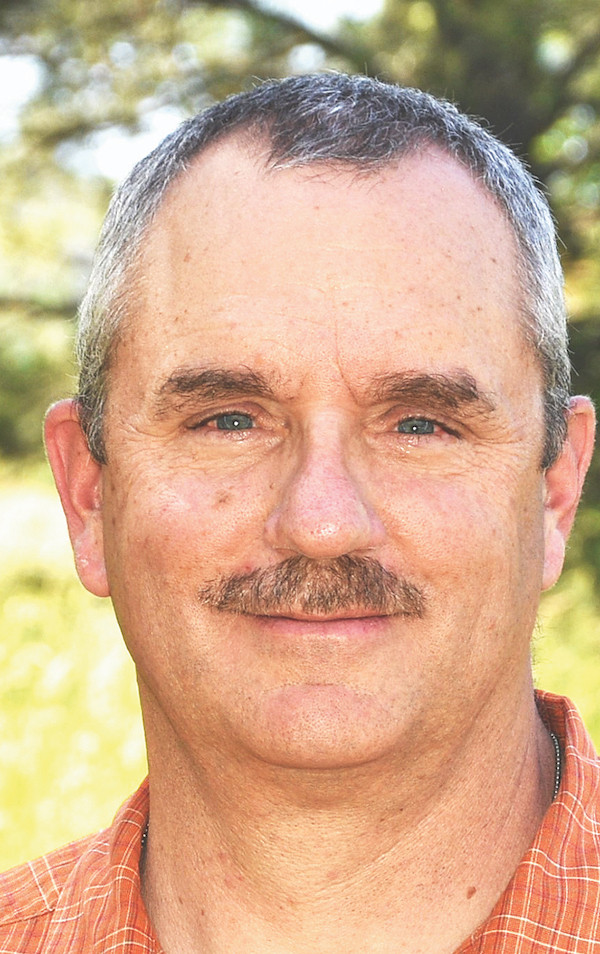Wildfire preparedness should begin now

Land, Water and People
May is National Wildfire Awareness month. This fact alone should raise your eyebrows a little. Add to that the numerous Red Flag Warnings issued by the National Weather Service for our area in the month of April and your eyes will get wider. Add to the mix, that just a short 150 miles south of here our New Mexican neighbors are dealing with three very large wildfires. The Rocky Mountain Geographic Area, in which we live, is predicted to have an above average Significant Wildland Fire Potential for May and June. Our long-term forecasters are predicting below normal precipitation and above normal temperatures for the same period. Finally, the US Drought Monitor shows the bulk of our area in Severe Drought. That’s right, the same wind has caused yet another Red Flag Warning as I write this.
It is with these predictions and under these conditions that I sincerely hope our Weather Service, Predictive Services, and climatologist folks are all very wrong, but as specialists, they are likely correct. These extremely valuable specialists use numerous models to create the highly valuable tools, such as the above-mentioned products, that fire managers use to plan fire responses. I know the agencies are working on their plans and closely monitoring the conditions and situation, both regionally and nationally. But what are we, the non-agency people doing?
The key here is planning. With local state and federal fire agencies already planning for what may come, I’d like to encourage everyone to begin your fire planning process immediately. As fires on the front range just a few months ago have illustrated, wildfires seem to be a bit different and reaching areas we have previously thought to be at very low risk. My eyebrow just raised again. So, what do we do with that information? Plan and prepare.
Each property owner should take a critical look at the fuels on their property. My definition of fuels is anything that can burn long enough to sustain heat or spread to other items that are also fuel. Vegetation is the most common fuel we speak of in wildland fires. But property owners need to consider that wooden fences can act as a wick that can bring a fire from their yard, directly to their buildings. Scrap lumber and stacked firewood in the wrong places can serve as a receptive fuel bed for embers that flew a long way. Your cars, boats, campers, and stuff-I’m-savin’-under-the-tarp are all fuels too and once burning, can lead to the dire consequence of igniting your home. Make the changes now, when it is a no-stress time, because if you try to do this when the smoke is in the air, you’ll be nowhere near as effective with your efforts. Besides, when the smoke is in the air and your property is at risk of an advancing fire, your time would be better spent working on your evacuation.
Since we are not all fire experts, there are numerous ways for property owners to get help in getting started in this what may seem a daunting task. Don’t worry, it isn’t. It just takes commitment. One of my favorites, the Ready, Set, Go program was launched by California’s Cal Fire, many years ago and has help thousands of homeowners navigate the mountains of information by
dividing up the complex issue into three key elements. Get ready and Plan for the fire that is inevitably coming, Know what to do when it starts, and GO when the evacuation orders are issued. An easy to navigate website for the program is www.readyforwildfire.org/.
Taking that critical evaluation of your property is a great first step. The Colorado State Forest Service has an excellent website: https://csfs.colostate.edu/wildfire-mitigation/protect-your-home-property-from-wildfire/. I recommend taking a look at that website and navigating to a few of the pages within. Another good resource is https://www.nfpa.org/Public-Education/Fire-causes-and-risks/Wildfire/Firewise-USA. They have gotten a bit complex over the years, but the information is still great.
The bottom line is that there are resources out there that can help you understand what is needed, how to get there and possibly even help accomplish your goal. I urge every property owner, that has even the slightest risk of a home ignition from wildfire, to start the process of protecting your home now. t is never too soon.
Gregg Goodland is the Public Affairs Officer for the Rio Grande National Forest.



